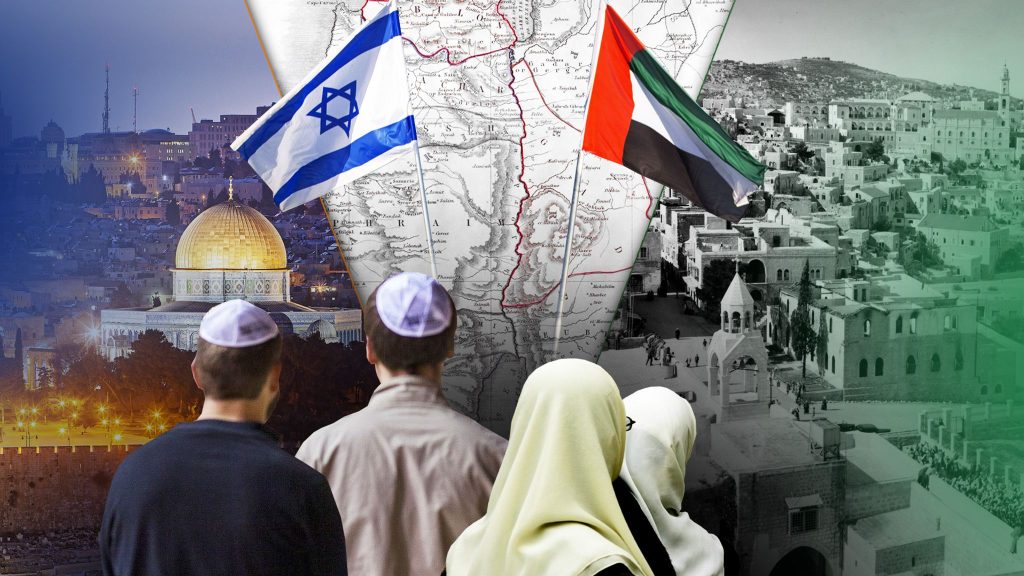The conflict between Israelis and Palestinians is one of the most enduring and complex struggles of the modern era. To many outside observers, it is a contemporary political dispute over borders, security, and statehood. But for those immersed in it, the battle is for a homeland, deeply rooted in ancient history and divine promise. To understand its intensity, one must look beyond the last century to the foundational texts that form the bedrock of Jewish and Muslim claims to the land: the Bible and the Quran.
The Biblical Foundation: A Covenant with Abraham
For Jewish people, the connection to the land of Israel—known in ancient times as Canaan—is central to their faith and identity. This claim originates in the Hebrew Bible (the Old Testament), specifically in the Book of Genesis.
God’s call to Abraham (then Abram) is the cornerstone:
“The Lord said to Abram, ‘Go from your country, your people and your father’s household to the land I will show you… and all peoples on earth will be blessed through you.’” (Genesis 12:1-3)
Later, this promise is made explicit in the Covenant of the Pieces:
“On that day the Lord made a covenant with Abram and said, ‘To your descendants I give this land, from the Wadi of Egypt to the great river, the Euphrates—the land of the Kenites, Kenizzites, Kadmonites, Hittites, Perizzites, Rephaites, Amorites, Canaanites, Girgashites and Jebusites.’” (Genesis 15:18-21)
This covenant is reaffirmed to Abraham’s son Isaac and his grandson Jacob, whose name was changed to Israel. The Twelve Tribes of Israel are his descendants. The subsequent narratives of the Exodus from Egypt, the conquest of Canaan under Joshua, and the establishment of the kingdoms of David and Solomon in Jerusalem solidify this historical and spiritual claim. For 3,000 years, Jerusalem has been the focal point of Jewish yearning, the site of their ancient Temples and the heart of their prayer.
The Quranic Narrative: A Legacy of Prophets
The Quran, revealed in the 7th century CE, acknowledges and incorporates many biblical figures, including Abraham (Ibrahim), Moses (Musa), and Solomon (Sulayman), venerating them as righteous prophets of Islam. The connection of the Jewish people to the land is recognized.
Surah Al-Ma’idah (5:21) recounts Moses instructing his people:
“O my people, enter the Holy Land which Allah has assigned to you and do not turn back [from fighting in Allah’s cause], for you will become losers.”
However, Islamic tradition introduces a crucial element: the Al-Isra wal-Mi’raj (the Night Journey and Ascension). The Quran states:
“Exalted is He who took His Servant by night from al-Masjid al-Haram to al-Masjid al-Aqsa, whose surroundings We have blessed, to show him of Our signs.” (Surah Al-Isra 17:1)
While the Quran does not explicitly name Jerusalem, nearly all Islamic scholars identify “al-Masjid al-Aqsa” (the Farthest Mosque) with the Temple Mount in Jerusalem. This event, where the Prophet Muhammad is believed to have journeyed from Mecca to Jerusalem and ascended to heaven, sanctified the city (known as Al-Quds, “The Holy”) as the third holiest site in Islam. The Dome of the Rock and the Al-Aqsa Mosque were built on the Temple Mount in the late 7th century, physically anchoring Muslim claim and devotion to the city.
This creates a theological overlap: the same small piece of earth is the site of the Jewish Temple and the third holiest site in Islam.
From Shared History to Modern Conflict
For centuries, Jewish, Christian, and Muslim communities lived in the region under various empires (Roman, Byzantine, Ottoman). The modern conflict is not primarily about religion but about nationalism and land.
- Zionism: In the late 19th century, the rise of Zionism—a political movement seeking a Jewish homeland in response to European persecution—led to increased Jewish immigration to Ottoman, and later British-controlled, Palestine.
- The British Mandate: After World War I, the League of Nations gave Britain control of Palestine. Conflicting promises made to both Arab leaders (for independence) and Zionist leaders (for a “national home”) sowed the seeds of intense conflict.
- The UN Partition Plan (1947): In 1947, the UN proposed dividing the land into separate Jewish and Arab states, with Jerusalem under international administration. Jewish leaders accepted the plan; Arab leaders rejected it.
- The 1948 War and The Nakba: Upon Israel’s declaration of independence in 1948, neighboring Arab armies invaded. The war resulted in Israel’s expansion, the displacement of over 700,000 Palestinians (known as the Nakba, or “catastrophe”), and the division of the land between Israel, Jordan, and Egypt.
This event defines the modern conflict. For Israelis, 1948 was a war of independence and survival. For Palestinians, it was the beginning of a national trauma of dispossession and exile that continues today.
The Impasse: Two Peoples, One Land
The core issues remain unresolved:
- Borders: Should they be based on the 1967 lines, with land swaps?
- Jerusalem: How can it be shared as the capital of two states?
- Security: How can Israel’s need for security be reconciled with Palestinian sovereignty?
- Refugees: What is the right of return for Palestinian refugees and their descendants?
The deep historical and religious claims, while not the direct cause of the modern political dispute, provide a powerful, non-negotiable backdrop. They fuel the conviction that the land is not just a territory to be divided, but a sacred inheritance granted by God.
Conclusion: The Weight of the Past on the Present
The Israeli-Palestinian conflict cannot be fully understood without acknowledging the ancient stories that both sides hold sacred. The Bible’s covenant and the Quran’s blessing have, over millennia, forged an unbreakable bond between two peoples and the same sliver of land. These narratives are not historical footnotes; they are living, breathing forces that fuel national identity, justify sacrifice, and deepen the tragedy of a conflict where both peoples see themselves as the rightful inheritors of a promise. Until a solution is found that acknowledges the depth of both these historical pain and these divine aspirations, the struggle for this unending land will continue.
